Biology of keratorefractive surgery- PRK, PTK, LASIK, SMILE, inlays and other refractive procedures
- PMID: 32653492
- PMCID: PMC7508965
- DOI: 10.1016/j.exer.2020.108136
Biology of keratorefractive surgery- PRK, PTK, LASIK, SMILE, inlays and other refractive procedures
Abstract
The outcomes of refractive surgical procedures to improve uncorrected vision in patients-including photorefractive keratectomy (PRK), laser in-situ keratomileusis (LASIK), Small Incision Lenticule Extraction (SMILE) and corneal inlay procedures-is in large part determined by the corneal wound healing response after surgery. The wound healing response varies depending on the type of surgery, the level of intended correction of refractive error, the post-operative inflammatory response, generation of opacity producing myofibroblasts and likely poorly understood genetic factors. This article details what is known about these specific wound healing responses that include apoptosis of keratocytes and myofibroblasts, mitosis of corneal fibroblasts and myofibroblast precursors, the development of myofibroblasts from keratocyte-derived corneal fibroblasts and bone marrow-derived fibrocytes, deposition of disordered extracellular matrix by corneal fibroblasts and myofibroblasts, healing of the epithelial injury, and regeneration of the epithelial basement membrane. Problems with epithelial and stromal cellular viability and function that are altered by corneal inlays are also discussed. A better understanding of the wound healing response in refractive surgical procedures is likely to lead to better treatments to improve outcomes, limit complications of keratorefractive surgical procedures, and improve the safety and efficiency of refractive surgical procedures.
Keywords: Apoptosis; Cornea; Corneal fibroblasts; Corneal haze; Corneal inlays; Corneal scar; LASIK; Laser thermal keratoplasty (LTK); Mitomycin C; Myofibroblasts; PRK; PTK; Radial keratotomy; Small incision lenticule extraction (SMILE); Thermal conductive keratoplasty (CK); Wound healing.
Copyright © 2020 Elsevier Ltd. All rights reserved.
Figures
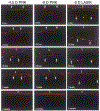

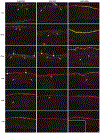

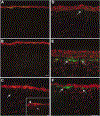




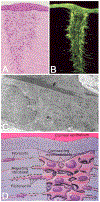
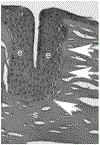
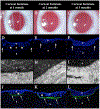
Similar articles
-
Review of Laser Vision Correction (LASIK, PRK and SMILE) with Simultaneous Accelerated Corneal Crosslinking - Long-term Results.Curr Eye Res. 2019 Nov;44(11):1171-1180. doi: 10.1080/02713683.2019.1656749. Epub 2019 Aug 23. Curr Eye Res. 2019. PMID: 31411927 Review.
-
Past and present of corneal refractive surgery: a retrospective study of long-term results after photorefractive keratectomy and a prospective study of refractive lenticule extraction.Acta Ophthalmol. 2014 Mar;92 Thesis 2:1-21. doi: 10.1111/aos.12385. Acta Ophthalmol. 2014. PMID: 24636364
-
In Vivo Prediction of Air-Puff Induced Corneal Deformation Using LASIK, SMILE, and PRK Finite Element Simulations.Invest Ophthalmol Vis Sci. 2018 Nov 1;59(13):5320-5328. doi: 10.1167/iovs.18-2470. Invest Ophthalmol Vis Sci. 2018. PMID: 30398623
-
Corneal Molecular and Cellular Biology for the Refractive Surgeon: The Critical Role of the Epithelial Basement Membrane.J Refract Surg. 2016 Feb;32(2):118-25. doi: 10.3928/1081597X-20160105-02. J Refract Surg. 2016. PMID: 26856429 Free PMC article. Review.
-
Corneal densitometry after photorefractive keratectomy, laser-assisted in situ keratomileusis, and small-incision lenticule extraction.Eye (Lond). 2017 Dec;31(12):1647-1654. doi: 10.1038/eye.2017.107. Epub 2017 Jun 16. Eye (Lond). 2017. PMID: 28622316 Free PMC article.
Cited by
-
Corneal remodeling after SMILE for moderate and high myopia: short-term assessment of spatial changes in corneal volume and thickness.BMC Ophthalmol. 2023 Oct 6;23(1):402. doi: 10.1186/s12886-023-03148-0. BMC Ophthalmol. 2023. PMID: 37803347 Free PMC article.
-
Efficacy of gabapentin and pregabalin for treatment of post refractive surgery pain: a systematic review and meta-analysis.Int Ophthalmol. 2024 Oct 24;44(1):409. doi: 10.1007/s10792-024-03300-9. Int Ophthalmol. 2024. PMID: 39448432
-
Factors affecting single-step transepithelial photorefractive keratectomy outcome in the treatment of mild, moderate, and high myopia: a cohort study.Int J Ophthalmol. 2022 May 18;15(5):786-792. doi: 10.18240/ijo.2022.05.15. eCollection 2022. Int J Ophthalmol. 2022. PMID: 35601171 Free PMC article.
-
Efficacy of single-step transepithelial photorefractive keratectomy in myopia, hyperopia and astigmatism-a systematic review.BMC Ophthalmol. 2025 Feb 26;25(1):93. doi: 10.1186/s12886-024-03830-x. BMC Ophthalmol. 2025. PMID: 40001065 Free PMC article.
-
Based on TransRes-Pix2Pix network to generate the OBL image during SMILE surgery.Front Cell Dev Biol. 2025 May 21;13:1598475. doi: 10.3389/fcell.2025.1598475. eCollection 2025. Front Cell Dev Biol. 2025. PMID: 40469419 Free PMC article.
References
-
- Alió JL, Mulet ME, Zapata LF, Vidal MT, De Rojas V, Javaloy J, 2004. Intracorneal inlay complicated by intrastromal epithelial opacification. Arch. Ophthalmol 122, 1441–6. - PubMed
-
- Antonios R, Abdul Fattah M, Arba Mosquera S, Abiad BH, Sleiman K, Awwad ST, 2017. Single-step transepithelial versus alcohol-assisted photorefractive keratectomy in the treatment of high myopia: a comparative evaluation over 12 months. Br. J. Ophthalmol 101, 1106–1112. - PubMed
-
- Ayala Espinosa MJ, Alió Y Sanz J, Ismail MM, Sánchez Castro P, 2000. [ Experimental corneal histological study after thermokeratoplasty with holmium laser]. Arch. Soc. Esp. Oftalmol 75, 619–25. - PubMed
-
- Carones F, Fiore T, Brancato R, 1999. Mechanical vs. alcohol epithelial removal during photorefractive keratectomy. J. Ref. Surg 15, 556–562. - PubMed
Publication types
MeSH terms
Grants and funding
LinkOut - more resources
Full Text Sources
Medical
Research Materials

